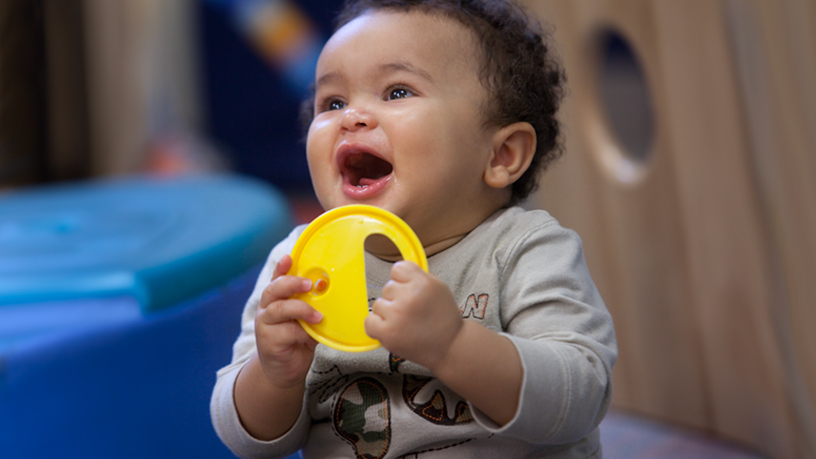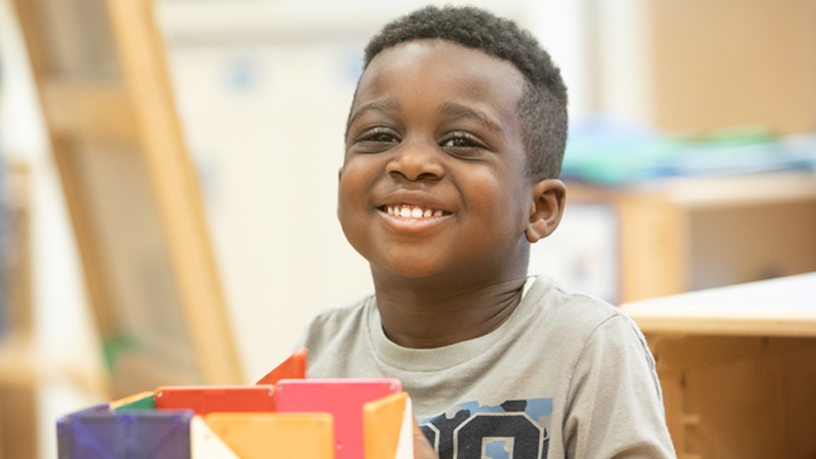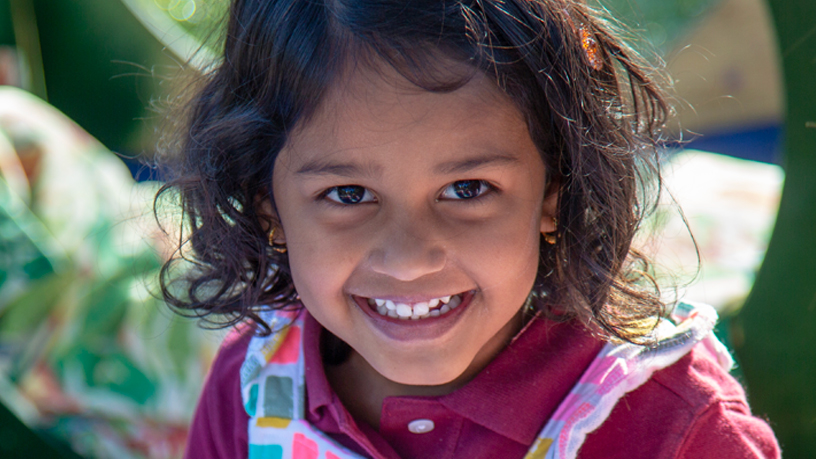School Readiness at Bright Horizons
School Readiness Starts Here: Early Education That Builds Confidence and Skills
Ready for school. Ready for life. At Bright Horizons, we know that school readiness goes beyond academics. That’s why our discovery-led programs are designed to inspire children to be curious and creative thinkers—ready to embrace new experiences with confidence.


What does it mean to be ready for school?
At Bright Horizons, school readiness is so many things. From being prepared for success in kindergarten and beyond, to learning to love the process of learning.
Hear from Rachel Robertson, our Chief Academic Officer, on how we build a strong foundation for each child's future.

A DISCOVERY-LED APPROACH TO LEARNING
As a parent, you want your child to enjoy these exciting years before kindergarten, while also developing all the right skills for all that comes next. Bright Horizons’ discovery-driven curriculum gives your child both. Our expert teachers build excitement around learning, and inspire curiosity, creativity, and confidence at every age and stage. And with a research-backed curriculum, we focus on future-ready skills — supporting all areas of development through hands-on learning experiences that nurture each child’s unique interests.
Are Bright Horizons® alumni ready for school?

Parents and elementary school teachers say Bright Horizons prepared their child with the skills needed to succeed in school and life
.ashx?as=1)
Parents say Bright Horizons equipped their child with the self-help skills needed to be ready for new responsibilities and greater independence

Parents say their child developed the social-emotional skills needed to collaborate with peers, make new friends, and navigate relationships
School Readiness Survey 2025
Check out this year’s results, and see what school readiness truly means.
Learn more about our programs
“The teachers my son had at Bright Horizons did a great job in meeting him where he was. They constantly gave him new challenges that he enjoyed, which helped him appreciate continuous learning.”
FAQs About School Readiness
Children should enter their first years of elementary school with an ability to comprehend broader language and math concepts, but also feel prepared for the social and emotional demands of school. Key indicators of a child’s readiness for kindergarten and first grade include:
- Readiness to accept new responsibilities and greater independence
- Critical thinking and problem-solving skills
- A strong enthusiasm for learning
- Innovative and creative thinking
- The ability to make new friends and respect others
Bright Horizons prepares children by focusing equally on all aspects of development: cognitive, physical, and social-emotional. We know that this approach gives children their best chance for healthy, happy, successful lives.
We incorporate the following characteristics to create a high-quality early childhood program that focuses on school readiness:
- Opportunities for meaningful play, project work, experimentation, and discovery. Children must understand not only what to learn but also how to learn. We want children to observe; ask questions; notice similarities, differences, and patterns; and solve problems, all aspects of critical thinking.
- Math, literacy, and science interwoven throughout the day, rather than in isolation (worksheets and flash cards). For example, while planting a garden in a center or classroom, the children read books about plants, make signs and notes, measure the garden area, learn about soil and composting, count out and plant seeds, and care for and harvest the garden. The learning is rich, immediate, and relevant, and tends to stick with children. Our classrooms have designated math, science, and writing centers open to children each day.
- An emphasis on trusting relationships and caring social interactions. Social-emotional development is the foundation for all other learning and must be a priority. Teachers understand that young children are still learning and will make mistakes. Children are gently guided and encouraged as they gain confidence and learn to collaborate, communicate, and resolve conflict with each other.
- Well-rounded literacy activities. In addition to learning the letters of the alphabet, children must develop vocabulary, listen and communicate effectively, and view reading and writing as pleasurable and important ways to share ideas and gain knowledge. Children gain literacy skills by listening and reading.
Tips for School Readiness at Home:
1. Talk with your child. Encourage expressions of feelings and find time to share love and appreciation. These moments build your child’s confidence and ability to communicate and collaborate.
2. Read to your child. Instilling a love of reading will allow your child to learn content throughout their lives and also builds vocabulary, literacy learning, and even perspective taking.
3. Play with your child. Blocks, active games, and silly moments all forge communication and collaboration and nurture cognitive skills such as impulse control, working memory, and regulating behaviors.
4. Experience nature. The natural world is a laboratory that encourages risk, critical thinking, observation, imagination, and creative innovation.
5. Build social-emotional skills. Building emotional literacy (recognizing feelings, naming them, and knowing how to manage them) is good for school and great for life. Practice social skills like meeting a new person, separating for parents, managing feelings, sharing, joining into play, and more - these are the most valued school readiness skills from teachers.
6. Develop a growth mindset. Believing in your own personal abilities and growing a sense of determination are skills you can encourage in a young child. Use process praise (e.g. you never gave up!) versus product praise (e.g. you are so smart). This focus on abilities, tenacity, and growth can influence school success more than IQ.
7. Learn to love learning. Lifelong learning is a lifelong pursuit but many children begin to lose enthusiasm for learning as they get older. Make sure learning is fun and exciting by pursuing children’s interests, building learning into everyday experiences, and avoiding a focus on right/wrong.
Skills needed for kindergarten include: an ability to comprehend broader language and math concepts, as well as be prepared for the social and emotional demands of school. Teachers agree that key indicators of a child’s social and emotional readiness for kindergarten and first grade are readiness to accept new responsibilities and greater independence, a strong enthusiasm for learning, an ability to make new friends, and the ability to respect others.




